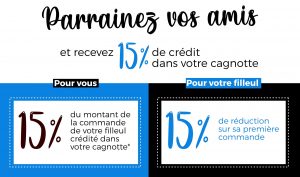Classification of optical fibers / Performance characteristics of optical fibers

Classification of optical fibers / Performance characteristics of optical fibers
Classification of optical fibers
① Classification by mode of transmission:
The mode of propagation in an optical fiber is the shape of the electromagnetic field, or optical field (HE), present in the fiber. The different field shapes are the result of multiple reflections and interferences in the optical waveguide. The different modes are discrete and discontinuous. As a standing wave is required to be stable in an optical fiber, its presence results in the different shapes of the optical field in the cross section of the fiber, that is to say the different light spots. If there is only one spot, this fiber is called a single-mode fiber, if there are more than two spots, it is called a multi-mode fiber.
② Divided by the diameter of the heart:
★50/125(μm) slow-varying multi-mode fiber.
★62.5/125(μm) Reinforced Slow Dimming Multimode Fiber
★8.3/125(μm) Slow-dimming single-mode fiber
③ By distribution of the refractive index of the fiber core:
★Progressive Index Fiber (SIF);
Gradient Index Fiber (GIF);
★ annular fibers (ring fibers);
★ Type W fiber
Multimode fibers
At a certain operating wavelength (850nm/1300nm), multiple modes are transmitted in an optical fiber, called multimode fiber. This type of fiber has a relatively large core diameter (50 to 80µm) and a diameter of 125µm. Multimode fibers with a gradual refractive index exhibit an abrupt change between core and cladding, while multimode fibers with a gradual refractive index exhibit a gradual change between the core and cladding. The former are limited to around 50 Mbit/s and the latter to 1 Gbit/s. In the case of graded refractive index fibers, the refractive index decreases from the core outward. Light travels faster in materials with a lower refractive index. Light therefore travels faster in the outer material than in the core. The end result is that all the light tends to arrive at the same time. However, this correction still has a distance limit.
Due to dispersion or aberration, this type of fiber has poorer transmission performance, narrower frequency band and lower transmission capacity over shorter distances.
Single-mode fibers
Single-mode fibers transmit only the primary mode, meaning that light is only transmitted along the inner core of the fiber. Since mode dispersion is completely avoided, single-mode fibers have a wide transmission band and are therefore suitable for high-capacity and long-distance optical fiber communications. These fibers have a small core (7 to 1Oµm), which forces light to travel along the cable in a single, straight path, unlike the multipath reflection found in multimode fibers. However, another form of dispersion, called dispersal, is problematic (see below). The usual light source is a laser. This type of fiber is complex to implement, but offers greater communication capacity and greater transmission distances.
Fiber specifications indicate core and cladding diameter in fractions. For example, the minimum recommended type for FDDI (Fiber Distributed Data Interface) is 62,5/125µm multimode fiber. The cladding diameter must be the same when connecting the fibers, because connectors usually match the core diameter to the cladding diameter.
Multimode progressive refraction and gradient refraction fibers are typically available in core sizes of 50, 62,5, or 100 µm. They have progressive refraction and a sheath diameter of 125 µm.
Single-mode fibers are typically available with core diameters of 7 to 10µm and cladding diameters of 125µm.
The ITU has defined a series of recommendations that describe the geometric and transmission properties of multimode and single-mode fibers.
Four of the most important recommendations are listed below.
ITU Recommendation G.651 addresses graded refraction multimode fibers with a normal core diameter of 50 µm and a normal cladding diameter of 125 µm.
ITU G.652 deals with single-mode NDSF (non-dispersion shifted fiber), which made up the majority of fiber optic cables installed in the 1980s. And transmission occurs in the l310nm range, where signal dispersion is minimal. G.652 fiber supports the following distances and data rates: 2,5 Gbps over 1 km, 000 Gbps over 1 km, and 60 Gbps over 40 km.
The ITU G.653 standard addresses dispersion-shifted single-mode fibers. These fibers use a design approach that aims to “shift” the wavelength range down to the 550nm scatter minimization region. In this range, attenuation is also minimized, allowing cable distances to be extended.
ITUG.655 discusses NZ-DSF (non-zero dispersion shifted fiber) single-mode fibers, which use dispersion properties to suppress four-wave mixing growth. NZ-DSF fiber supports high-power signals and longer distances, as well as closely spaced DWDM (dense WDM) channels at throughput of 2,5OGbps or higher. It supports the following distances and data rates: 6000 Gbps for 10 km, 400 Gbps for 40 km and 25 Gbps for XNUMX km.
The G.655 standard is the latest development in optical fibers. In particular, the G.655 standard is optimized for the operation of long-distance fiber optic cables such as WDM cables and submarine cables. It uses dispersion, which gives good results. Dispersion helps reduce the effects of four-wave mixing (FWM). This effect occurs in DWDM systems when three wavelengths are mixed and the resulting fourth wavelength overlaps and interferes with the original signal.
With DWDM, a single fiber can transmit several thousand λ circuits. A circuit λ is a specific subwavelength of light in the optical window. It has all the functions of a single circuit. λ is implemented using frequency division multiplexing. Each λ can be thought of as a specific color of infrared light transmitted at a rate of lOGbit/s or more. For example, Avanex's PowerMux can place more than 800 channels on a single fiber with a gap of 2,5 GHz between channels. Since each fiber can have several thousand λs, it is also convenient for communications companies to lease entire wavelengths of fiber to businesses. See “Fiber optic networks”. The alternative to DWDM is new fiber modulation technology, which improves the functionality of existing fibers. Fiber optic modulation systems. Fiber optic FDM provides access to the full bandwidth of the fiber.
Optical fiber performance characteristics
Certain characteristics of optical fiber limit its performance. Fibers from different manufacturers may vary in these characteristics. The main performance limiting factors are attenuation and diffusion. They










